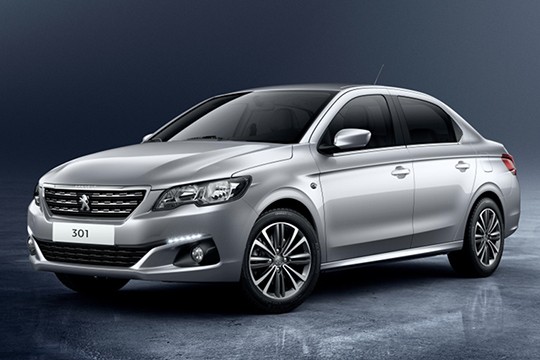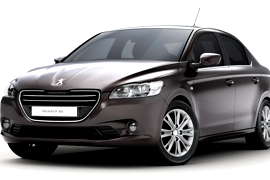PEUGEOT 301 Models/Series Timeline, Specifications & Photos
First production year: 2012
Engines: Gasoline, Diesel
Peugeot introduced the 301 lineup in 2012 as a low-budget vehicle competing with other low-priced cars but built by big automakers’ standards. But after five years on the market, the small-sized sedan went through a facelift that made it look more appealing.
During the world financial crisis, one of the best-selling European cars was a budget-friendly car made in Romania, the Dacia Logan. That vehicle saw huge sales compared to other cars, and that gave other automakers the idea of quickly developing a similar product. As a result, Peugeot-Citroen introduced the 301/C-Elisee models in 2012. But by then, the financial crisis had ended. Still, the French automaker had to do something with the newly developed vehicle and introduced it in several markets, not just in Europe. By 2017, though, the car already showed its age, and despite a few mandatory improvements over the years required by changes in legislation, the 301 looked largely the same. So, Peugeot engineers came up with a new model that the carmaker launched in 2017.
The new front fascia followed the same design signature as the rest of the Peugeot’s range. It featured swept-back headlights with a dent in their middle that evoked the fangs of a lion. The lower bumper got a new grille at the bottom flanked by side scoops where the automaker installed the fog lamps and the LED daytime running lights. At the same time, the upper grille featured a three-slat design where the Peugeot’s lion badge took center stage. From its profile, there were new improvements on the door panels and the door mirrors. Finally, at the back, the 2017 301 featured a new corner-mounted taillights that boasted a new design adorned with three vertical lights, following the same design concept as the one that existed on other Peugeot models, such as the 2008 and the 3008.
Inside, the automaker installed a cabin that didn’t look like it was a budget vehicle. Depending on the options, customers could get the 301 with a touchscreen for the infotainment system and a flat-bottom steering wheel. In addition, the materials’ quality was better than in the non-facelifted version of the vehicle. Still, the automaker couldn’t make more room for the vehicle’s passengers, but it was enough for five occupants on short journeys. Behind the cabin, Peugeot put a luggage compartment that could hold up to 640 liters (22.6 cu-ft.) and attracted customers from many customers.
Under the hood, Peugeot installed a choice of two gasoline and one turbodiesel engine. The new, 1.2-liter unit with three cylinders was good enough for in-city transportation. At the same time, the 1.6-liter turbodiesel boasted an incredible fuel efficiency of up to 69.2 MPG (3.4 l/100 km.) on highways.
After the world economic crisis, Peugeot-Citroen started a new lineup of small-segment sedans, mostly for the emerging markets: the Peugeot 301 and the Citroen C-Elysee.
The 301 was unveiled at the 2012 Paris Motor Show. The car was built on a mixed platform with components carried-over from other models in the Peugeot warehouse. In some countries, the sedan was the family choice, while the hatchbacks were considered for reckless young people. That is why the car was not sold in Western Europe but found its market share on the East European market, Turkey, Africa, and Latin America.
The design was basic, with a simple grille and a sculptured hood where the Peugeot badge was glued. As a fancy detail, the word Peugeot was stamped at the top of the grille. On the side, a sculptured ascending line was the only detail that made interrupted the plain, slightly curved, door panels.
Inside, the 308 was offered with basic necessities, such as air conditioning and an option for power-windows. Despite being small, the car was roomy enough for five adult passengers. The trunk was big, with enough room for a week's luggage. The rear bench seatback was split-folding in 60:40 proportions.
For the drivetrain, Peugeot offered a choice of gasoline or diesel engines mated to a 5- or 6-speed manual gearbox, depending on the engine. An option for a 4-speed automatic was on the options list.

